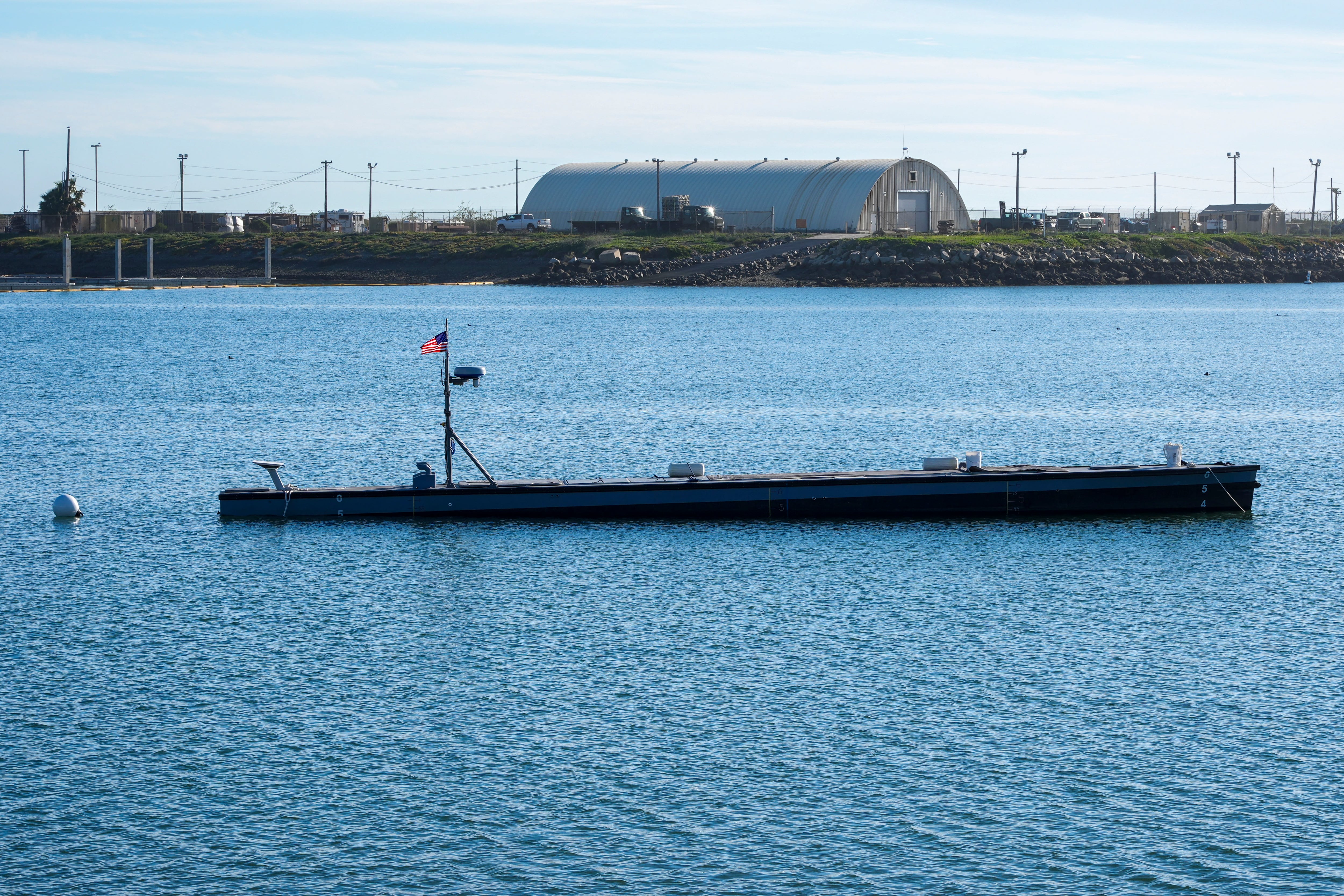The Marine Corps seeks to purchase eight new ships over the next five years, in the current budget proposal, to move littoral regiments around islands in the Pacific as it aims to counter the Chinese military.
Commandant Gen. Eric Smith told members of the House Committee on Appropriations in a hearing Wednesday that the Corps would acquire the first landing ship medium in fiscal 2025.
“The Force Design effort continues apace, and it requires a landing ship medium,” Smith said.
The Corps needs ships that can “go inter-island and to be able to beach itself and to come off a beach in order to carry these capabilities of long-range fires and sensing and making sense and passing to the joint force what the (People’s Republic of China) is doing throughout the first island chain,” he said.
RELATED

Plans call for another landing ship medium purchase in fiscal 2026 and two each year after that through 2029. The program previously was called the light amphibious warship program.
The Corps has the 3rd Marine Littoral Regiment in Hawaii and recently stood up the 12th Marine Littoral Regiment in Okinawa, Japan, which still is receiving personnel and equipment. Another Marine littoral regiment is scheduled to form in Guam in 2027.
Each regiment will require nine landing ship mediums. The Corps wants a total of 35 landing ship mediums to have eight additional ships to fill in during maintenance for the operational vessels.
The Navy released its request for proposals on the landing ship medium in January, with responses due by May, Defense News reported. The initial contract would cover six vessels.
But Marines aren’t waiting for those vessels to test the concept.
In February, the Marine Corps Warfighting Laboratory began experiments with the Resolution, an offshore supply vessel, modified with a stern landing ramp capable of offloading direction onto a beach, the U.S. Naval Institute reported.
The lab is working with the 254-foot vessel under a contract with two other planned contracts for such commercial offshore vessels as a prototype for the landing ship medium.
The vessel was used at the Army’s Project Convergence experiment at Camp Pendleton, California, in late February. Marines integrated with Army operations on fires and sustainment in a contested environment for the event.
Testing included hauling personnel, vehicles, gear and vessel-launched drone operations.
Marines envision using the landing ship medium in the shallower littoral zone where larger ships can’t go moving units and gear from ship to shore, and shore to shore, and back to sea.
Current concept designs have the landing ship medium at 200-feet to 400-feet in length with 8,000 square feet of cargo space.
The top Marine general also briefed members on two new weapons systems ― a missile/radar combination used to intercept enemy missiles and a new drone aimed to support the Marine expeditionary units for electromagnetic, artificial intelligence and intelligence, surveillance and reconnaissance needs.
Smith updated congressional leaders on the performance of the service’s use of the TPS-80 ground/air task oriented radar combined with the Israeli-made Tamir interceptor missile, known as the medium range intercept capability.
“(The missile) fits our needs, it is light enough to be transported and it has the range we require to protect our forces when paired with the TPS-80 G/ATOR radar,” Smith said.
Each medium range intercept capability launcher houses 20 missiles and can fire at ranges of more than 40 miles, according to the Raytheon website, which partners with Israeli defense company Rafael to build the missiles.
In his written remarks to the committee members, Smith outlined progress on the XQ-58A Valkyrie, an autonomous, low-cost tactical drone. The drone completed its second test flight in February, he wrote.
The system has six planned test flights that will measure its support for intelligence, surveillance and reconnaissance missions, autonomous electromagnetic support to crewed platforms, crewed-uncrewed teaming tasks and the potential for artificial intelligence-enabled platforms to augment combat air patrols, Smith wrote.
The drone is part of the Corps’ Penetrating Affordable Autonomous Collaborative Killer experiment, which is also providing data for its ongoing Marine air-ground task force unmanned aerial system, or MUX, program.
Todd South has written about crime, courts, government and the military for multiple publications since 2004 and was named a 2014 Pulitzer finalist for a co-written project on witness intimidation. Todd is a Marine veteran of the Iraq War.





